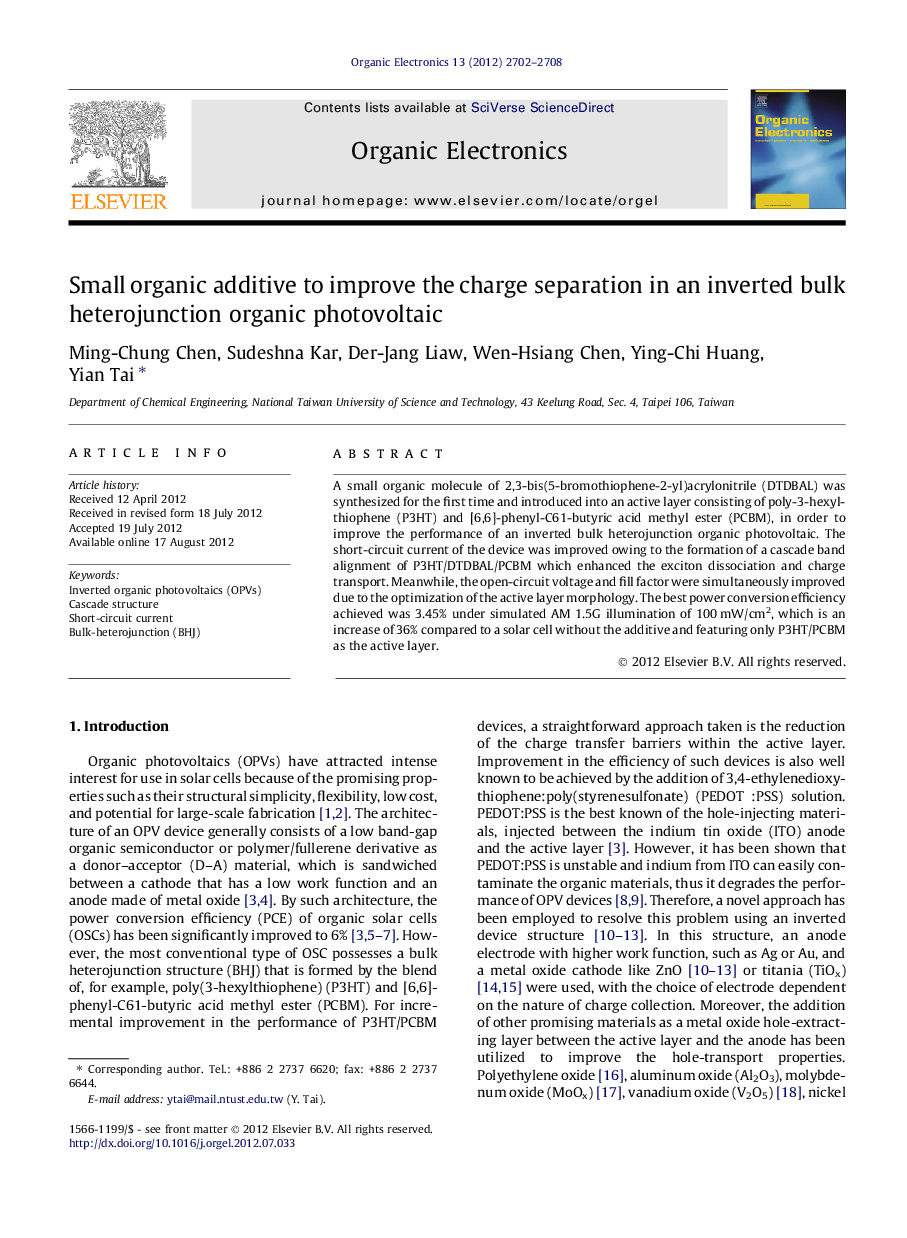| Article ID | Journal | Published Year | Pages | File Type |
|---|---|---|---|---|
| 1264061 | Organic Electronics | 2012 | 7 Pages |
A small organic molecule of 2,3-bis(5-bromothiophene-2-yl)acrylonitrile (DTDBAL) was synthesized for the first time and introduced into an active layer consisting of poly-3-hexylthiophene (P3HT) and [6,6]-phenyl-C61-butyric acid methyl ester (PCBM), in order to improve the performance of an inverted bulk heterojunction organic photovoltaic. The short-circuit current of the device was improved owing to the formation of a cascade band alignment of P3HT/DTDBAL/PCBM which enhanced the exciton dissociation and charge transport. Meanwhile, the open-circuit voltage and fill factor were simultaneously improved due to the optimization of the active layer morphology. The best power conversion efficiency achieved was 3.45% under simulated AM 1.5G illumination of 100 mW/cm2, which is an increase of 36% compared to a solar cell without the additive and featuring only P3HT/PCBM as the active layer.
Graphical abstractFigure optionsDownload full-size imageDownload as PowerPoint slideHighlights► We have synthesized a new molecule [2,3-bis(5-bromothiophene-2-yl)acrylonitrile] as an additive in an inverted BHJ OPV. ► The highest power conversion efficiency of the device with the additive was increased by 36% compared to the pristine OPV. ► The improvement of the device was due to the formation of a cascade band alignment within the active layer. ► Such cascade structure can enhance the exciton dissociation and charge transport of the OPV device.
